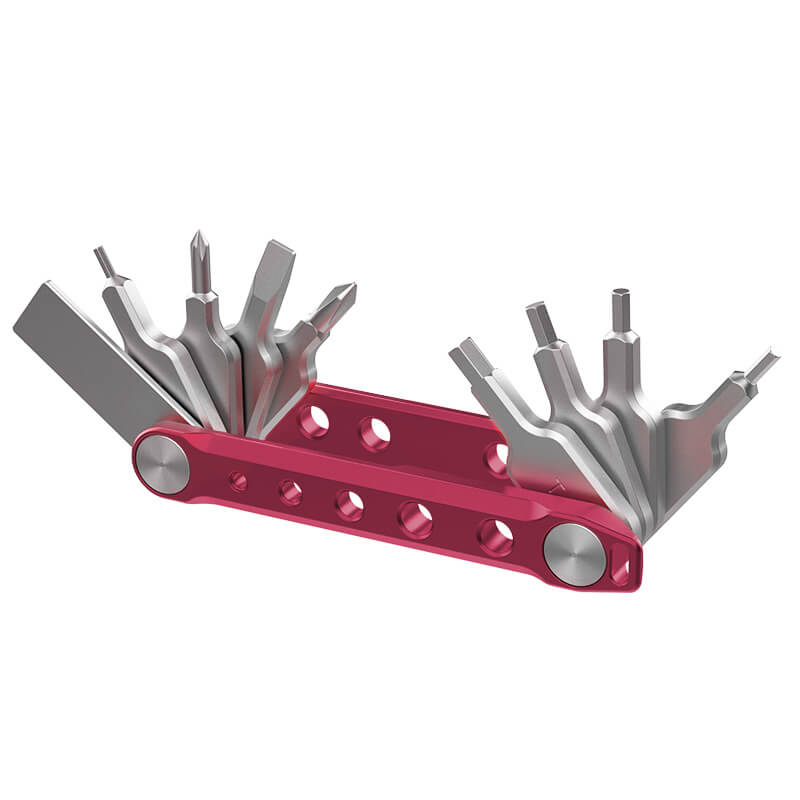Proper video lighting goes far beyond simply making a scene visible; it's an essential tool for storytelling, setting mood, and creating a professional look. This comprehensive guide is designed to illuminate the path for videographers looking to master this crucial skill. Let's explore the world of video lighting with clear and cohesive insights that will help you light up your next project like a pro.

Understanding the Properties of Light
To harness its full power, one must understand the core properties of light: intensity and exposure, color temperature, direction and angle, and diffusion and quality.
Intensity and Exposure
Intensity refers to the strength of light. In video production, the right intensity is crucial as it determines not only how much light is cast on your subject but also the exposure of the final footage. Too little light and your image may be underexposed, murky, and lacking detail. On the other hand, too much light can lead to overexposure, where highlights are blown out, and the image loses its subtle tones.
Color Temperature
The emotional tone of a video is influenced by the color temperature of the light, measured in Kelvins. Measured in Kelvins (K), color temperature ranges from warm to cool. Lower Kelvin values represent warmer colors, like the golden hues of sunrise, which tend to create cozy, intimate atmospheres. Higher Kelvin values correspond to cooler colors, similar to the bluish tone of daylight, which can suggest clarity and alertness.
Direction and Angle
The direction from which light hits your subject and the angle at which it casts shadows are pivotal in sculpting the scene's depth and texture. Side lighting emphasizes textures and shapes, front lighting minimizes shadows for a more open feel, and backlighting creates silhouettes and separates subjects from the background, adding dimension and depth. Top lighting can introduce an ethereal or heavenly quality, while under-lighting might be used for a horror effect due to its unnatural appearance.
Diffusion and Quality of Light
Diffusers spread light evenly, softening shadows and contrasts for a flattering effect and natural transition between light and dark areas. Hard light, without diffusion, produces sharp shadows and high contrast for dramatic effects.
Choosing the Right Video Lighting Equipment
Types of Lights

- Tungsten Lights: Warm, 3200K light ideal for cozy scenes; high quality but hot and may need diffusion.
- LED Lights: Flexible color temperatures, energy-efficient, cooler than tungsten, ranging from small to large setups.
- Fluorescent Lights: Daylight-like, soft light at around 5600K, suitable for even, diffused lighting in studios or on location.
- HMI Lights: Mimic daylight, high-intensity, good for film production needing natural light; expensive and require careful handling.
Light Modifiers and Their Uses

Modifiers help tailor the quality and direction of light to achieve the desired effect:
- Softboxes: These attach to lights and soften their output, reducing harsh shadows for a natural look, commonly used in portraits and interviews.
- Umbrellas: Serve to either bounce light for a slight exposure boost or diffuse it for gentler illumination, favored for their portability and ease of use in quick setups.
- Reflectors: With these, existing light can be redirected to fill in shadows or add highlights. Reflectors are simple yet effective tools for shaping light without the need for additional power sources.
- Gels: Gels change the color of the light output for creative effects or to correct color imbalances between different light sources. They are especially useful in mixed lighting conditions or when you want to evoke a specific atmosphere.
Lighting Accessories

Accessories play a supporting role but are crucial for achieving the perfect lighting setup:
- Light stands: As the backbone of any lighting setup, they hold lights in place and allow for height and angle adjustments. Stands must be sturdy enough to safely support lights and modifiers.
- Mounting Solutions: Various clamps and grips enable secure positioning of lights, especially in unconventional locations where stands may not be practical.
- Grids: Grids can be attached to softboxes or other lighting modifiers to narrow the beam of light, giving you control over spill and ensuring the light only falls where you want it.
- Barn Doors: Mounted directly on lights, barn doors shape the beam and prevent unwanted light spill, offering a high degree of control over the lighting.
- Remote Triggers: These wireless devices allow for remote activation and adjustment of lights, an indispensable feature when managing multiple light setups or when lights are out of reach.
Mastering Lighting Setup Techniques

Three-Point Lighting Framework
- Three-point lighting is a classic setup that creates dimension and depth in a scene. The balance between these three lights affects the mood of the footage and can either accentuate or diminish the texture and features of the subject.
- Key Light: The main light, often set to one side of the camera, illuminates the subject and defines the visual tone.
- Fill Light: Positioned opposite the key light, it softens shadows and adds detail to the subject's features without flattening.
- Backlight: Placed behind the subject, it outlines them with a light edge, enhancing separation from the background.
Alternative Lighting Methods
While three-point lighting is foundational, alternative methods can define specific aesthetics or respond to storytelling needs:
- Butterfly Lighting: Key light is placed in front and overhead, casting a distinctive shadow under the nose and accentuating features, ideal for beauty shots.
- Rembrandt Lighting: The key light is angled from the side and above, creating a light triangle on the cheek, suitable for dramatic effects and depth.
- Loop Lighting: A slightly off-center key light produces a small nose shadow, adding gentle dimension to the face without strong drama.
Creative and Advanced Lighting Setups
For more artistic or mood-driven projects, advanced lighting setups can help convey different narratives and emotions:
- High-Key Lighting: A bright, shadow-less setup for light-hearted scenes like comedies or sitcoms.
- Low-Key Lighting: Uses stark contrasts and shadows for suspense and drama.
- Motivated Lighting: Mimics natural light to add realism and context. The trick here is to make artificial lights feel like a logical part of the setting.
Working with Natural and Artificial Light

The interplay between natural and artificial light in video production can be complex, yet when done correctly, it enhances the visual storytelling of the piece.
Maximizing Natural Light in Video Production
- Plan Around the Sun: Timing is crucial. The golden hour-shortly after sunrise or before sunset-offers soft, diffused light that's flattering for any subject. Conversely, the midday sun can cast harsh shadows and should be softened using diffusers or reflectors.
- Scout Your Location: Visit your location at different times of the day to understand how the light changes. This will help you plan your shoot around the best natural lighting conditions.
- Use Reflectors and Diffusers: These tools help control natural light. Reflectors can fill in shadows, while diffusers can soften direct sunlight.
- Embrace Cloud Cover: Overcast days are natural diffusers, spreading light evenly and cutting down on harsh shadows. They're ideal for shooting scenes that require subtle lighting nuances.
Combining Natural and Studio Light

- Match Color Temperatures: When combining daylight with studio lights, ensure your artificial lights are balanced to match daylight's color temperature (around 5600K). You can adjust this with gels or by selecting LED lights with variable color settings.
- Control Intensity: The intensity of your artificial lights should complement, not compete with, natural light. Use dimmable lights to fine-tune the artificial light to the level of the ambient light.
- Maintain Continuity: Observe the direction and quality of natural light and position artificial lights to maintain consistency as the sun moves or as clouds pass.
- Eye for Detail: Be vigilant about the shadows and highlights produced by both light sources. The goal is to blend them so that they look like they are part of the same environment.
- Use Modifiers Wisely: Softboxes or fresnels with barn doors on your studio lights can shape the artificial light to blend seamlessly with the natural light, mimicking its pattern and direction.
Optimizing Your Video Lighting Setup
Evaluating Your Environment
Consider room size, the presence of reflective surfaces, and potential ambient light sources that could affect your setup. Large spaces may require more powerful lighting compared to smaller ones. Reflective surfaces like mirrors or shiny floors might bounce light in unexpected ways, creating glare or uneven lighting.
Adjusting Light Settings
Utilize dimming, color tuning, and strategic placement to shape the scene. Dimmers help control brightness, color tuning alters mood, and positioning affects shadows and highlights.
Using a Light Meter and Histograms
Tools like light meters provide objective readings of the illumination on set, ensuring the camera will capture the scene with the right exposure. Similarly, reviewing histograms on your camera or editing software gives you a visual representation of the luminance across the image. A balanced histogram usually points to a well-exposed shot. Use these tools to fine-tune your settings for consistent, professional-looking footage.
Elevating Your Video with Expert Lighting
Video lighting is a skill that can make good footage great. By understanding light, choosing the right equipment and mastering lighting techniques, you can tell your story clearly and in detail. No matter what type of light you're using, remember that each beam can bring your vision to life. Get your gear, use light to create, and let your creativity shine. Let's make your next project shine!






